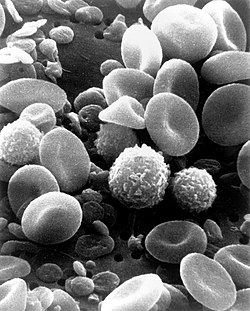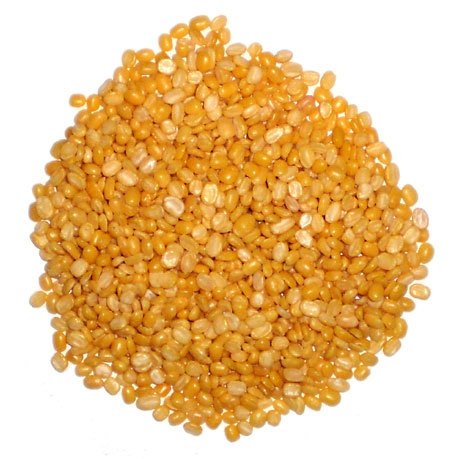Read on as I share the amazingly
simple secret...
Dear Health-Conscious Reader,
No one wants to go to a nursing home. In fact, ending up in a nursing home is something most of us dread.
But in Japan – where people live longer than in just about any other part of the world – nursing homes are almost unheard of.
These are people living long, active lives. And they’re doing it from the comfort of their own homes.
And I’m writing you today because I believe I’ve figured out how they do it…
Isolating the “Japanese Effect” for a Longer Life

On average, the Japanese outlive Americans by six years. |
My name is Dr. Al Sears, MD. In addition to running my private
medical practice and anti-aging wellness center, I’m constantly
searching for effective, natural solutions to help you fight the aging
process – so you can live better, longer.
When I was researching Japanese longevity, I looked at their
overall lifestyles, their work lives, their exercise routines and what
they were putting into their bodies.
There was one difference that really stood out... maybe the biggest I’ve discovered.
And it’s very simple.
The best part is you can start using it today to help you feel better and give you more energy.
It’s an antioxidant called
epigallocatechin-3-gallate (EGCG for short). The Japanese consume it almost every day, mostly in the form of green tea.
If you’re like most of us, you probably get little or no EGCG
from the foods you eat and the beverages you drink. It’s just not part
of the things we eat culturally. So there’s a good chance you lack the
strong antioxidant cellular protection EGCG provides.
And it’s EGCG that makes all the difference...
So What Makes EGCG So Special?
Meet Dr. Al Sears, MD
Uniquely Qualified to
Keep You Healthier for Life
 Dr. Al Sears, MD, Dr. Al Sears, MD, is a medical doctor and one of the nation’s first board-certified anti-aging physicians.
As a board-certified clinical nutritionist,
strength coach, ACE-certified fitness trainer and author, Dr. Sears
enjoys a worldwide readership and has appeared on more than 50 national
radio programs, ABC News, CNN and ESPN.
In 2010, Dr. Sears unveiled his proven anti-aging strategies in Reset Your Biological Clock.
As the first U.S. doctor licensed to administer a groundbreaking DNA
therapy that activates the gene that regulates telomerase, Dr. Sears
made history by bringing telomere biology to the general public.
In 2006, Dr. Sears shocked the fitness world by
revealing the dangers of aerobics, “cardio” and long-distance running
in his book, PACE: The 12-Minute Revolution.
In 2004, Dr. Sears was one of the first doctors
to document the true cause of heart disease and expose the misguided
and often fatal drugs-and-surgery approach to heart health.
In The Doctor’s Heart Cure,
Dr. Sears outlines the easy-to-follow solution that effectively
eliminates your risk of heart disease, high blood pressure and stroke.
An avid lecturer, Dr. Sears regularly speaks at
conferences sponsored by the American Academy of Anti-Aging Medicine
(A4M), the American College for the Advancement of Medicine (ACAM) and
the Age Management Medicine Group (AMMG).
Dr. Sears has trekked through the Amazon and
climbed some of the world’s tallest mountains while traveling the world
in search of herbs, novel cures and traditional remedies.
Meeting with doctors and healers from Peru,
Brazil, India, Jamaica and Tanzania in East Africa, Dr. Sears has
brought back and revitalized much of the traditional knowledge
considered endangered in today’s modern world
|
About 20 years ago, researchers discovered evidence of a “longevity gene.” It’s a gene that may increase your life span.
We all have it, but for some people it takes a little extra push
to switch it on. There are a few ways you can turn on this “longevity
gene.” One way is by eating much less. Researchers found giving mice a
diet with very few calories significantly extended their life spans.¹
Later on, studies found the same idea was true with a wide
range of living creatures from single-celled organisms to plants and
animals. The results showed that taking in fewer calories does turn on
the longevity gene, and the organisms lived longer.²
Recently researchers isolated a family of life-protecting genes called
sirtuins.
Under conditions of severe stress, such as starvation, your sirtuins
are turned on. And they transmit signals to every cell in your body to
cancel out the effects of aging.
This would be a great solution to aging... if starving were an option.
That’s where EGCG comes in. EGCG helps switch on your longevity genes in a similar way as restricting your calorie intake.
One of the medical journals I follow,
Rejuvenation Research,
supports this idea. Their results stated: “The protective effects of
high-dose EGCG against oxidative stress were comparable with the effects
of caloric restriction, a well-established dietary intervention that
retards aging.”
That means that with the proper intake of EGCG, you have the opportunity to get the benefits of sirtuins and
still eat nutritious foods. EGCG also can help slow the aging process because it helps:
- Zap harmful free radicals.
- Promote joint comfort and mobility.
- Support healthy DNA, leaving cells stable and healthy.
- Boost your exercise capacity by up to 30 percent.
- By being 25 to 100 times more potent than vitamins C and E.
- Ward off the problems that come with aging.
So not only could you live longer, you could be adding more active years.
But fighting the aging process and gaining youthful energy are
just two possible benefits. Green tea also has been shown to help
support normal cholesterol, colon function and more.
Getting the Most Benefit From EGCG
Takes More Than Drinking a Cup or Two of Tea
Before you grab your teacup, you should know something. Many of
the beneficial components of green tea – including EGCG – are broken
down in the intestinal tract making them useless to you.

You’d have to drink six cups of green tea every day to get the benefits of the "Japanese Effect." |
In fact, your body can only absorb and use about 39 percent of these components.
7
You’d have to drink green tea all day to get the right amount of antioxidant cell protection!
But during my research, I found a pure extract of the tea leaf that contains 50 percent EGCG.
Because it’s already in a pure form, your body is able to absorb
it better in larger amounts… before your digestive system has a chance
to break it down and make it useless to you.
Now you can begin to enjoy the benefits of EGCG without having to
take in endless cups of tea. All it takes are two caplets of this
powerful green tea extract.
But I knew I could do more to amplify the power of the green tea
extract…because EGCG is only part of the equation to awaken your
longevity gene.
There are four powerhouse nutrients that can
activate your anti-aging sirtuins...and when you combine them, you have
the power to shut down the pathways that lead to cell death and old age.
Put Your Body’s Own “Master Guardian” to Work For You
The second nutrient is something called superoxide dismutase, or
SOD.
Antioxidants come from two places: your food and your own body.
The ones your body can make are your primary antioxidants and they are
even more powerful in keeping you young and fit than the ones that come
from your food.
SOD is the most powerful antioxidant your body has. SOD
safeguards your DNA, the blueprint your body uses to build every organ,
tissue and cell in your body. It supports your immune system and fights
off the devastating forces of aging. No other antioxidant even comes
close to that kind of power.
When you’re young, you make lots of SOD. It works as sort of a
“Master Guardian” of your youth. Unfortunately as you get older, you
produce less and less of your own SOD – triggering the aging process.
But what happens when you supplement your levels of SOD? In one
study, fruit flies that were engineered to make additional SOD lived 66
percent longer than those without the alterations.
8 Pretty simple idea. And I believe the same theory applies to humans.
Maintain your SOD levels and you may enjoy a better life span.
But as I mentioned, if you want to turn on your longevity gene, don’t stop there...
A Natural Way to Slow the Aging Process
This next “sirtuin activator” is
resveratrol. You’re probably familiar with resveratrol because it’s been hyped for years as the red wine antioxidant.
But a glass of red wine typically has less than a milligram
of resveratrol. You’d need to drink a lot of wine to get the full
benefits – turning something helpful into something that’s potentially a
problem.
I began using a concentrated form of resveratrol with my
patients years ago. It didn’t take long before I saw results. Using
their blood tests as a guide, I measured changes in heart health and
mobility – I even recorded a general slowing of aging.
Resveratrol also acts as a potent antioxidant, binding with
“free radicals,” the molecules that cause cell damage and lead to death
over time. And its power to enhance and prolong your life goes way
beyond anti-aging. You could even say it’s nature’s wonder drug.
During recent studies, resveratrol excelled across the board. Some of its benefits include:
9
- Promoting healthy glucose metabolism and optimal body weight.
- Supporting cardiovascular health.
- Enhanced mitochondrial energy production (the mitochondria are the tiny power plants inside each of your cells).
- Improved motor function, including balance and coordination.
That last benefit is worth repeating. Resveratrol actually improves your quality of life by boosting your physical abilities.
But as powerful as resveratrol is, I’ve uncovered something that could be even more exciting…
NEW Longevity Activator May Be Even Better
It turns out that resveratrol has a superstar cousin.
It’s called
pterostilbene (pronounced tare-oh-STILL-bean) – and it can do many of the same things resveratrol can, plus more.
It’s so new that you’re among the first to hear about it…and I’ve just started using it in my clinic.
Pterostilbene and resveratrol are found together in nature,
and also work together in your body. When you combine them, the results
are even better than using one without the other.
When I look at the way the research is going, pterostilbene might even be a little bit more powerful than resveratrol.
For starters, research suggests that pterostilbene is more bioavailable.
10 That means it gets absorbed into tissues more easily, so it can have its most beneficial effect.
Studies have also shown pterostilbene works harder to support the colon, brain, and cardiovascular system.
11,12
Both resveratrol and pterostilbene have remarkable effects
on learning and memory. But in one study, supplementation with
pterostilbene
reversed cognitive behavioral deficits in
animals. This study showed working memory function was correlated with
levels of pterostilbene in the hippocampus, a key brain location where
memory is processed.
That could be the kind of edge your brain needs to get sharper and more agile.
But there’s one more reason I like pterostilbene…
It Stops Free Radicals in Their Tracks
by
Blocking Their Power Source
Pterostilbene and resveratrol are both powerful, “high
capacity” antioxidants. Not only do they protect the cells in your body
from early death, they trigger the activation of your anti-aging genes.
But while resveratrol fights free radicals in your bloodstream,
pterostilbene targets these inflammatory molecules in a different way…
In clinical studies, pterostilbene seems to block an enzyme that
ordinarily would make some free radicals stronger.
14
Together, these anti-aging antioxidants work to protect
every cell, tissue and organ in your body – keeping them healthier,
longer.
Start Creating Your Own “Japanese Effect”
To Your Good Health,

Al Sears, M.



























 Dr. Al Sears, MD, is a medical doctor and one of the nation’s first board-certified anti-aging physicians.
Dr. Al Sears, MD, is a medical doctor and one of the nation’s first board-certified anti-aging physicians. 


